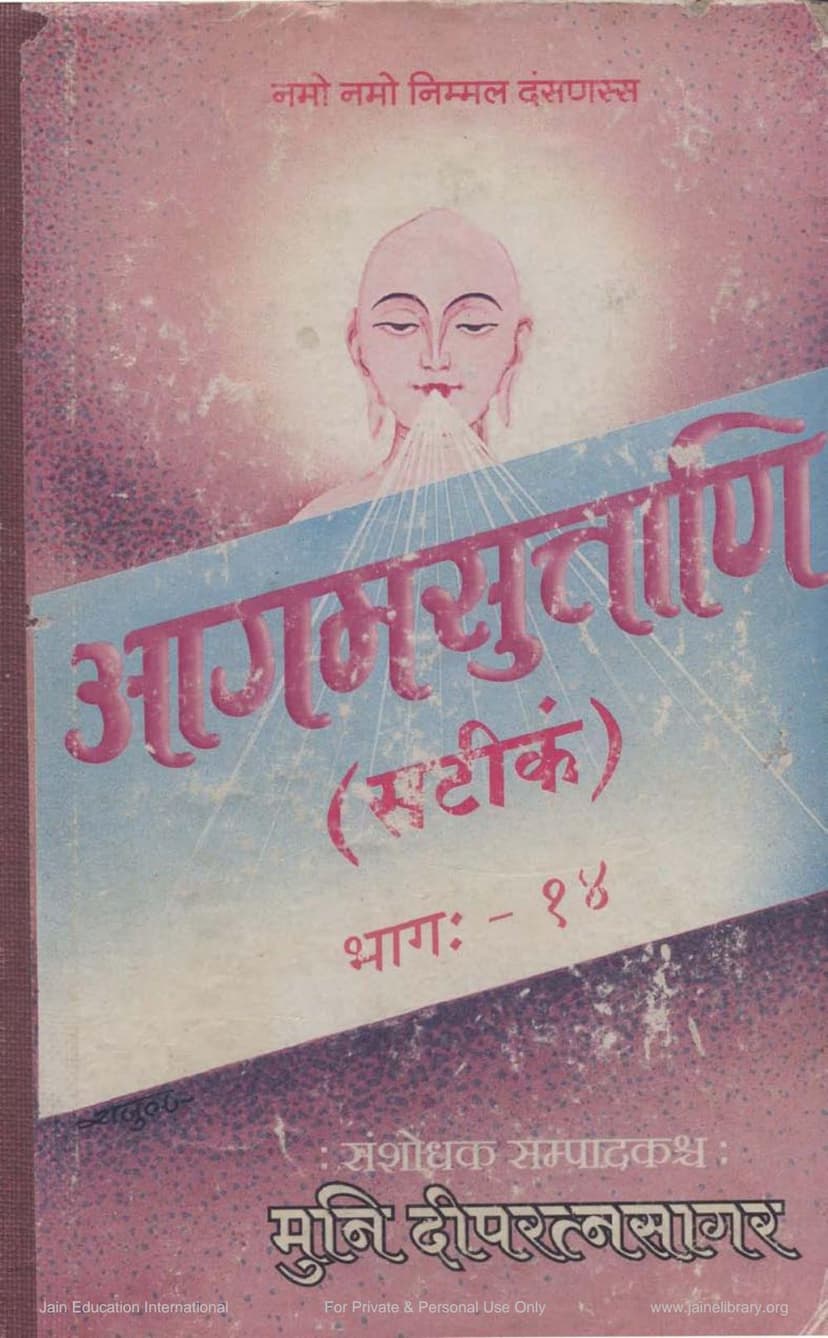Agam Sutra Satik 30 Gachchhachar PainngSutra 07
Added to library: September 1, 2025

Summary
This document, titled "Agam Sutra Satik 30 Gachchhachar PainngSutra 07," published by Agam Shrut Prakashan and authored by Dipratnasagar and Deepratnasagar, is the 14th part of a larger series titled "Agam Suvani (Satik)." The catalog link provided is https://jainqq.org/explore/003364/.
The document is a Hindi translation and commentary of Jain Agam Sutras, specifically focusing on the Gachchhachar Prakirnak Sutra, which is the seventh Prakirnak.
Here's a breakdown of its content and context based on the provided pages:
Core Content:
- The Book: It's a comprehensive edition of Jain Agam Sutras, presented with a Sanskrit commentary (Satik).
- Volume: This is Volume 14 of the "Agam Suvani (Satik)" series.
- Sponsorship: The publication lists various individuals and organizations as financial supporters, indicating a community effort in preserving and disseminating Jain scriptures.
- Scope: The initial pages (1-5) provide a detailed index (Vishayanukram) of the sutras covered within this volume (Volume 14). This volume contains:
- Five Upanga Sutras: Nirayavalika, Kalpavatsika, Pushpika, Pushpachulika, and Vrishnidsa.
- Ten Prakirnak Sutras: Chatursharan, Aturapratyakhyan, Mahapratyakhyan, Bhaktaparigya, Tandulavaicharik, Samstarak, Gachchachar, Ganividya, Devendra Stava, and Maranasamadhi.
- Gachchachar Prakirnak Sutra: The main focus of this particular excerpt (starting from page 8) is the "Gachchachar Prakirnak Sutra." This sutra is described as the seventh Prakirnak.
- Commentary: The text includes a commentary (Vritti) attributed to Vanarshi Gani. The author, Muni Deepratnasagar, is the compiler and editor.
- Content of Gachchachar Prakirnak Sutra:
- Introduction (Mangala): The text begins with invocations and explanations of the purpose (Prayojan), subject matter (Abhidheya), relationship (Sambandh), and auspicious beginnings (Mangala) of the sutra.
- The Essence of Gachchachar: The sutra likely deals with the conduct, discipline, and principles followed within different Jain monastic orders (Gachchas).
- Key Themes: The commentary and excerpted verses delve into:
- The importance of following the right path (Sammyak Marg) versus the wrong path (Unmarga).
- The characteristics of good and bad spiritual leaders (Acharyas).
- The qualities of disciples and the importance of following guidance.
- The nature of virtuous conduct and the avoidance of pitfalls in monastic life.
- Discussions on various types of conduct, discipline, and the rules governing Jain monks and nuns (though the excerpt provided focuses heavily on the Gachchachar).
- Detailed descriptions of proper and improper conduct, including interactions, behavior, and adherence to vows.
- The significance of purification and confession (Alochana).
- The importance of right faith, knowledge, and conduct.
- The definition and characteristics of a true Gachcha (monastic community).
- The consequences of deviating from prescribed conduct.
- The importance of self-control, detachment, and adherence to scriptural teachings.
- Examples and illustrations are used to clarify the principles.
Context and Purpose:
- Preservation of Knowledge: This publication aims to make accessible and understandable the profound teachings of Jain Agams.
- Guidance for Conduct: The "Gachchachar" specifically offers guidelines for the correct conduct and behavior within the Jain monastic tradition, crucial for spiritual progress.
- Scholarly Edition: The presence of a commentary (Satik) and the editorial work by Muni Deepratnasagar suggest a scholarly approach to presenting the text.
Overall Impression:
The document is a significant contribution to Jain literature, providing a detailed and commented version of important Agam Sutras. The "Gachchachar Prakirnak Sutra" appears to be a foundational text for understanding and maintaining the integrity of Jain monastic life and principles. The extensive table of contents and the excerpted verses indicate a deep dive into the nuances of Jain philosophy and practice.